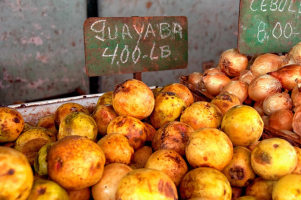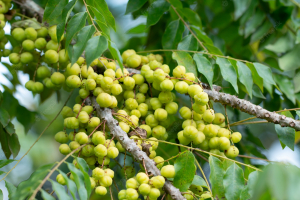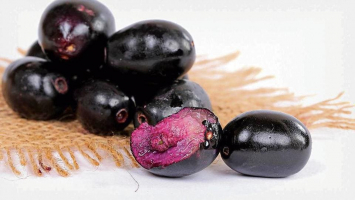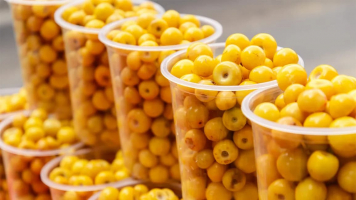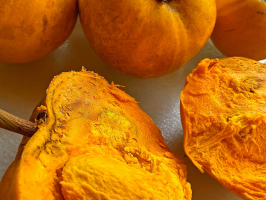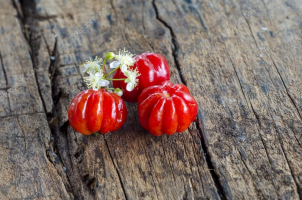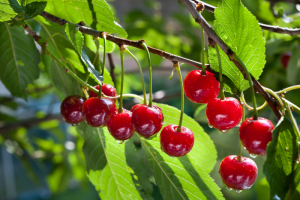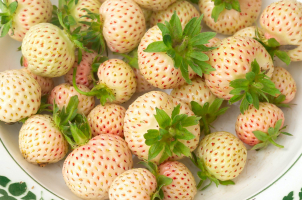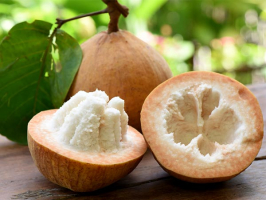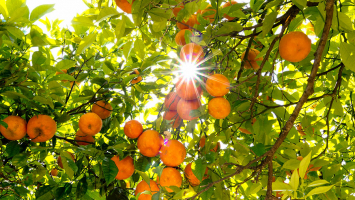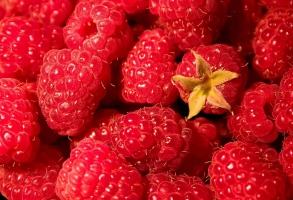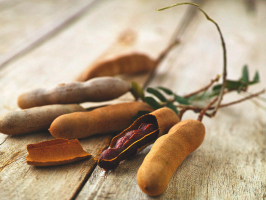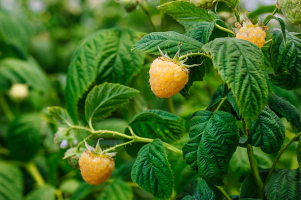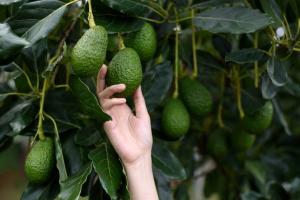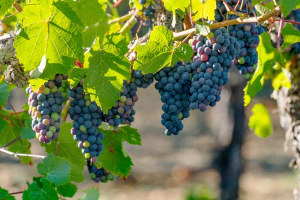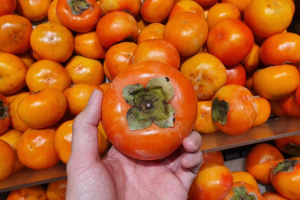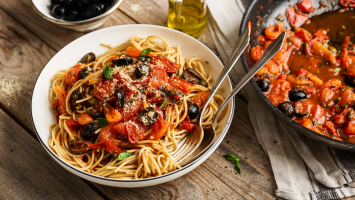Top 10 Most Delicious Peruvian Fruits
Blessed with extreme biodiversity and the three vastly different climate zones of the coast, highlands, and jungle, Peru is home to a myriad of fruits, some ... read more...native, others exotic and rarely known in other regions of the world. A visit to any Peruvian market is the perfect opportunity to see and try some of these special and unique fruits. Below are the most delicious Peruvian fruits, let's find out!
-
Golden berries are currently grown in Colombia, Ecuador, Peru, and Chile. They originate originally from the Andes Mountains in western South America. Since then, it has visited Egypt, Thailand, India (where it is known as ras bhari), Australia, and New Zealand. Golden berries have been grown in South Africa since around the 1950s and in England since the late 1700s. Goldenberries are about the size of a marble and are packaged in a paper lantern (1-2 cm wide).
Golden berries are not gooseberries (as the name Cape gooseberry suggests) but are actually closely related to the tomatillo and the Chinese lantern. It is more distantly related to tomatoes, potatoes, eggplant, and other members of the nightshade family. In Ecuador and Peru, uvilla refers to the golden berry. Golden berries are considered a superfood, being low in calories and with moderate levels of vitamins and minerals. They are listed as being high in antioxidants, polyphenols, and carotenoids. Many sources list golden berries as beneficial for treating weight loss, inflammation, diabetes, liver and kidney health, and improving the immune system.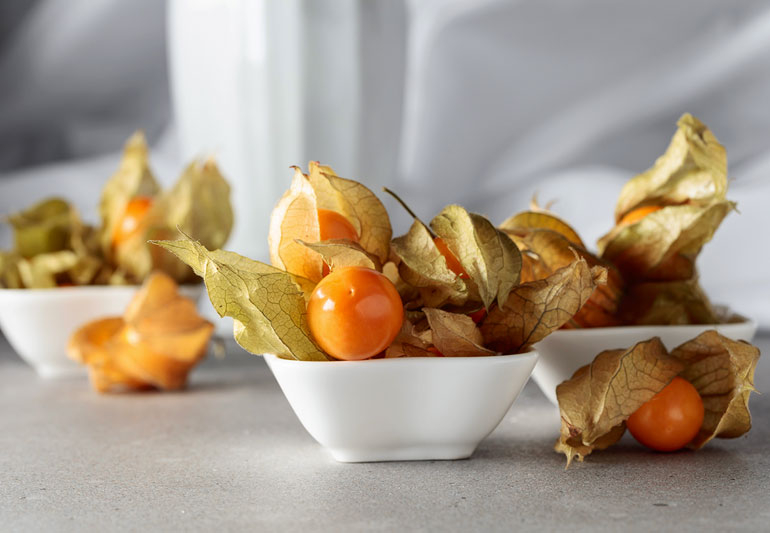
Cleveland Clinic's Health Essentials 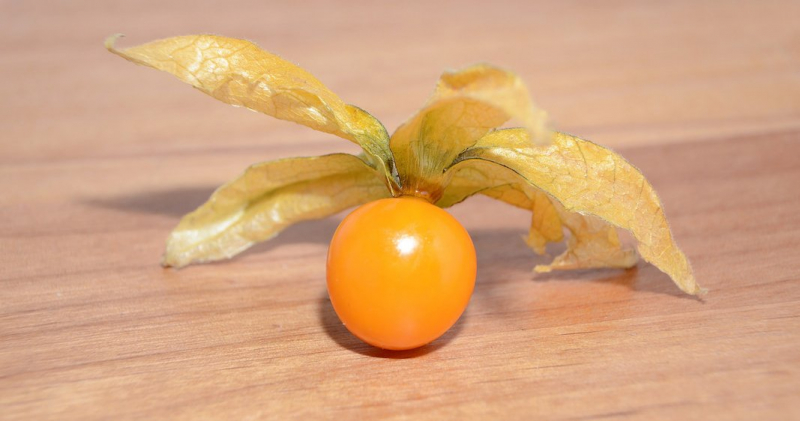
PhillyVoice -
Capulin cherries, botanically classified as Prunus salicifolia, are sweet-tart fruits belonging to the Rosaceae family. The small fruits develop in loose clusters of 15 to 20 cherries and grow on semi-deciduous trees reaching 12 to 15 meters in height. The trees can also bear more than one crop per season. If you plan to travel to Peru, you should not neglect Capulin fruit. It is one of the most well-known cherries in Peru. This outstanding fruit is native to Central America, Mexico, and Bolivia. Gradually, it is cultivated in many tropical regions worldwide. The fruit trees are grown on a small scale commercially but are primarily found in the wild or planted in home gardens.
The size of capulin cherries is modest, ranging from 1 to 3 centimeters in diameter, and they have a round to ovate shape with uniformly curved edges. The skin of the fruit is paper-thin, smooth, glossy, and delicate, with colors ranging from brilliant red to red-green to maroon, practically black. The variegated flesh has a firm, watery, and crisp, juicy quality underneath the skin and is found in hues ranging from pale green, and red, to golden yellow. The flesh also has a sizable central pit with a bitter kernel inside of it. Capulin cherries must reach full maturity before they develop a sweeter flavor because they are unpleasant when immature. In general, ripe capulin cherries darken in color and, depending on the type, have a somewhat sweet-tart, occasionally astringent flavor with a bitter finish.
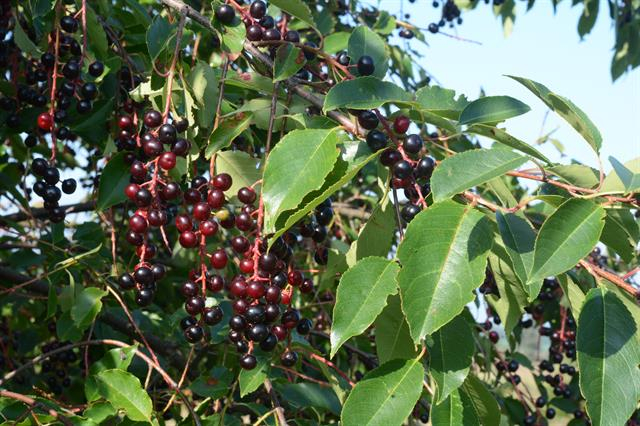
Growables 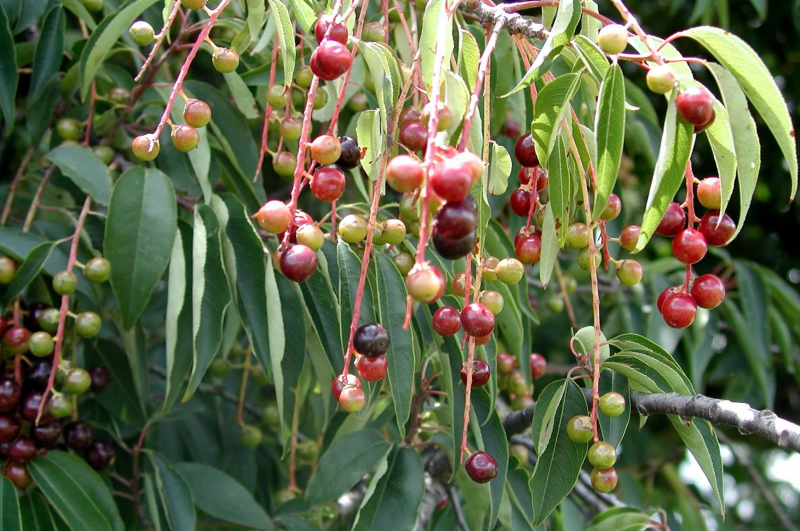
FreeImages -
Camu Camu berries, botanically classified as Myrciaria dubia, are tart, Amazonian fruits belonging to the Myrtaceae family. The shrubs that bear the vibrant berries are indigenous to the floodplains, riverbanks, and marshes of the Amazon rainforest, growing up to a height of 3 to 5 meters. In South America, Camu Camu is also referred to by a number of other names, including Araza de Agua or Cacari in Brazil, Mitu in Colombia, Guayabito in Venezuela, and Camo Camo in Peru. One Camu Camu shrub may yield more than 12 kg of fruit per season, and the berries have most recently caught the eye of global consumer markets as a fruit with a high nutritional value.
Small fruits with a round, oval, or ovate shape, camu camu berries have a diameter of 2 to 3 cm. Smooth, taut, and semi-thin, the fruit's skin is green when young and changes to variegated red-green to dark red-purple shades when it is ripe. High concentrations of citric and ascorbic acid give camu camu berries their acidic, tart, sour, subtly fruity flavor. Because of this, berries are frequently thought to be unpleasant to eat on their own and need additional sweeteners to balance the tangy flavor. Along with the berries, Camu Camu bushes also produce fragrant white blooms that draw helpful pollinators during specific seasons.
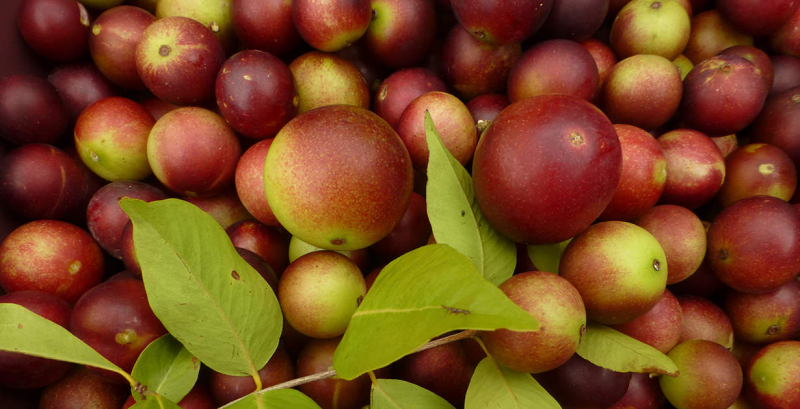
Dr. Axe 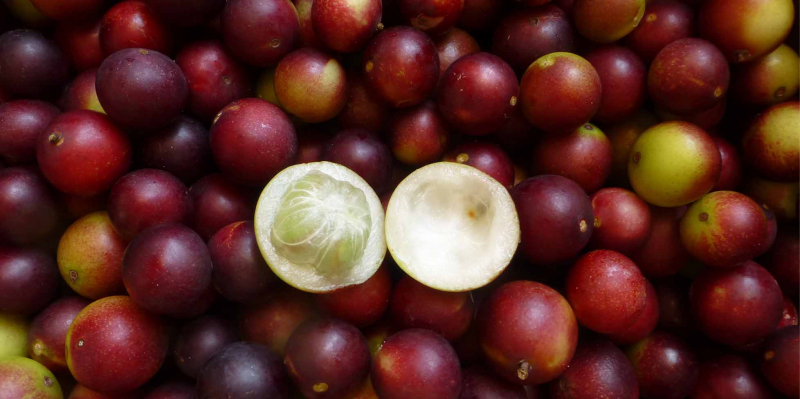
Amarumayu -
Noni, botanically classified as Morinda citrifolia, is a tropical fruit that grows on evergreen trees reaching 3 to 9 meters in height, belonging to the Rubiaceae family. Noni trees have historically been regarded as life-giving trees since the fruit, leaves, and bark are used for medicinal, cultural, and ceremonial purposes. Typically, you can create powders or Peruvian drinks from this excellent fruit. Moreover, Peruvians use this fruit to make lotions, soaps, or oil. You can feel its taste in curries or salads. It will become delicious when it is mixed with fruit juices and stews.
Noni fruit typically has an uneven, oval to oblong form and is small to medium in size, measuring 5 to 10 centimeters in length and 3 to 4 centimeters in diameter. The fruits are lumpy and slightly rough, and they have numerous small, angular, flat faces with light brown spots on each face. The fruit's flesh softens into a luscious, tomato-like consistency as it ripens, while the skin of the fruit transforms into a translucent yellow-white color. Numerous oval red-brown seeds are also contained in the meat. The flesh and juice also contain this strong smell and have a somewhat distinct, bitter, sharp, and acidic flavor.
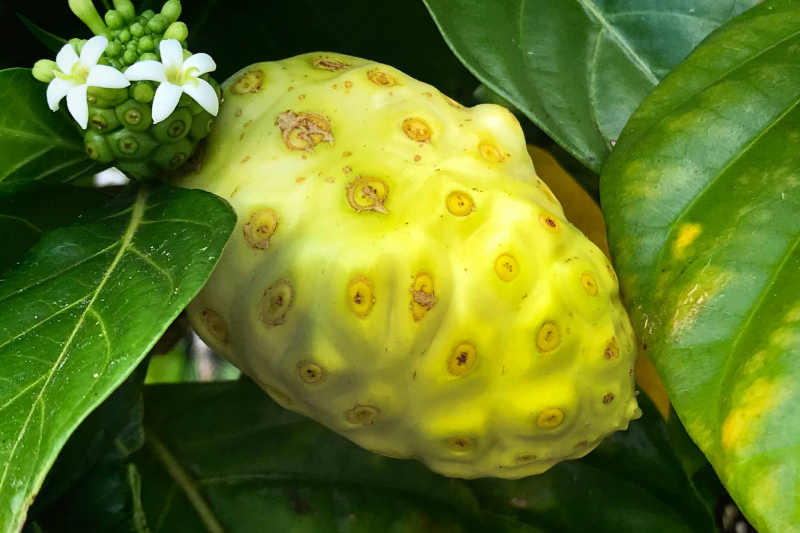
Fine Dining Lovers 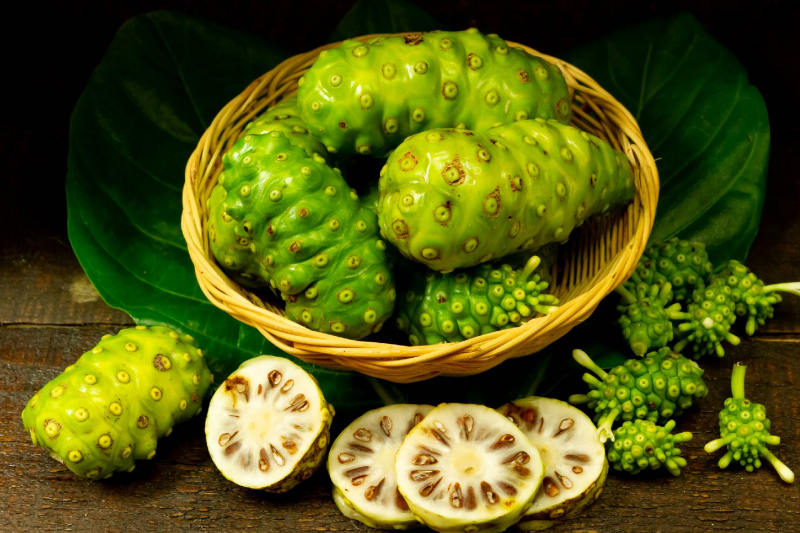
Fine Dining Lovers -
Sambucus nigra is a species complex of flowering plants in the family Adoxaceae native to most of Europe. Common names include elder, elderberry, black elder, European elder, European elderberry, European black elderberry, and tramman (Isle of Man). It thrives in a range of environments, primarily in sunny areas with fertile soils that are both moist and dry. The plant is extensively cultivated as a tiny tree or decorative shrub. Both the blossoms and the berries have a long history of usage in cooking, mostly for wine and cordial. There is no scientific proof that elderberry has any benefits for preserving health or curing ailments, despite the fact that it is frequently utilized in dietary supplements and conventional medicine.
Elderberry is a tiny, deciduous tree or shrub that rarely grows higher than 6 meters in height. When young, the bark is a light gray color that gradually darkens to a coarse gray outer bark with noticeable lenticels and lengthwise furrowing. The leaves have five to seven (sometimes nine) pinnate leaflets that are 5 to 12 cm long, 3-5 cm wide, and have a serrated margin. They are grouped in opposing pairs and measure between 10 and 30 centimeters long. Young stems are hollow in nature. Late autumn sees the production of the fruit, which is a glossy, dark purple to black berry with a diameter of 3 to 5 mm. The dark color of elderberry fruit originates from its substantial phenolic content, mainly from anthocyanins.
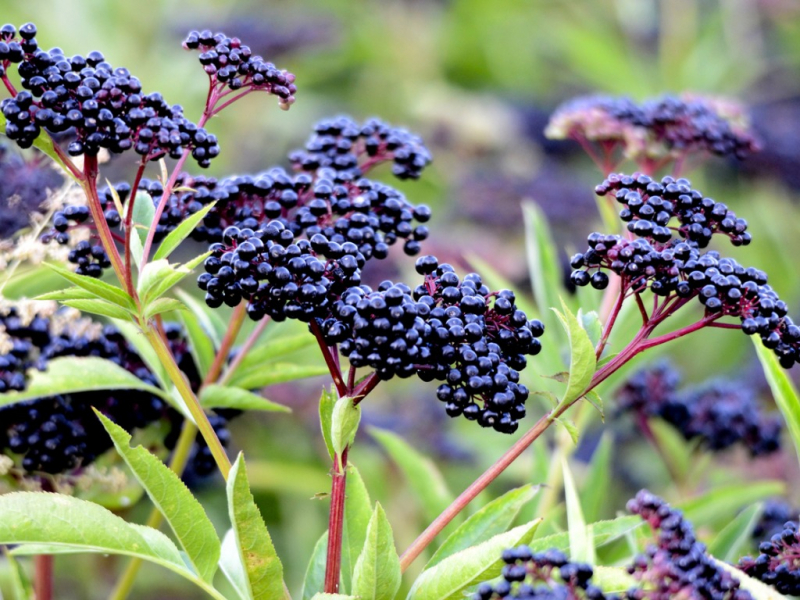
Gardening Know How 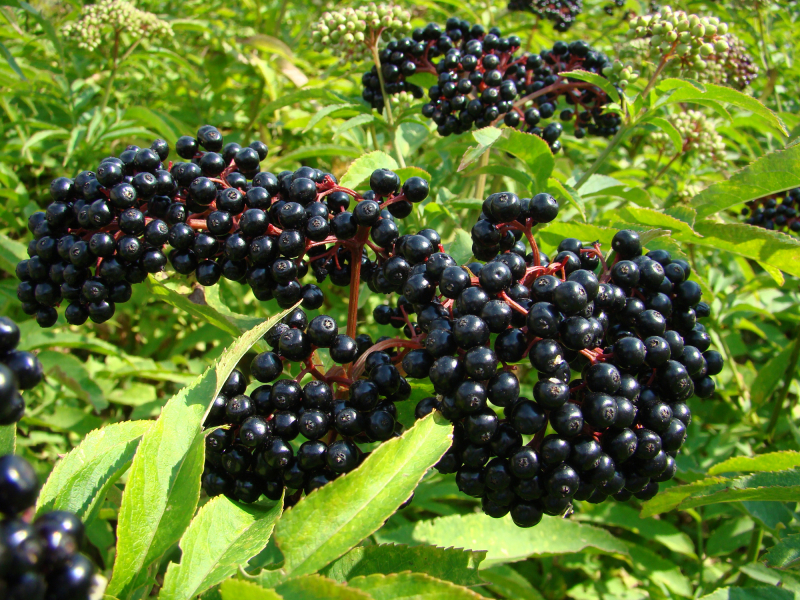
Wikipedia -
Pepino melon, also known as Pepino dulce (sweet cucumber), melon pear, or just Pepino, is a delicious fruit native to the temperate Andean areas of Chile, Columbia, and Peru. You can also find this fruit in other South American countries such as Kenya and Bolivia. It is a small oval fruit with firm, smooth skin that turns yellow with purple stripes when it ripens. The taste of Pepino fruit has been described as a cross between a cucumber and a honeydew melon or a cantaloupe. The fruit's size can range from that of passion fruit to that of a grown person's hand. As a perennial plant, the Pepino bush can last for many years.
The shrub can go as tall as 3 feet (1 meter) and as wide as 3 feet (1 meter). Like a tomato plant, they benefit from being staked, caged, or grown on a trellis. If allowed to spread out organically, the Pepino shrub will attract pests and animals that enjoy eating fruit. The Pepino will multiply and blanket the ground if you don't mind sharing your harvest. The fruit is mildly sweet and best eaten when completely ripe for the sweetest flavor. The entire Pepino fruit is edible, including the skin and seeds, though the skin may become tough by the time the fruit is ripe. Instead, peel the skin before eating, or eating around it.
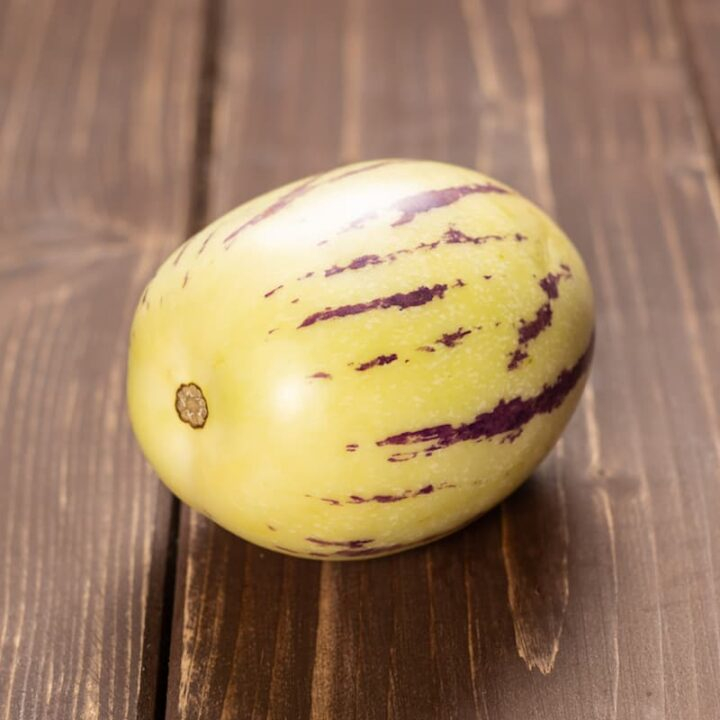
Gardening With Allie 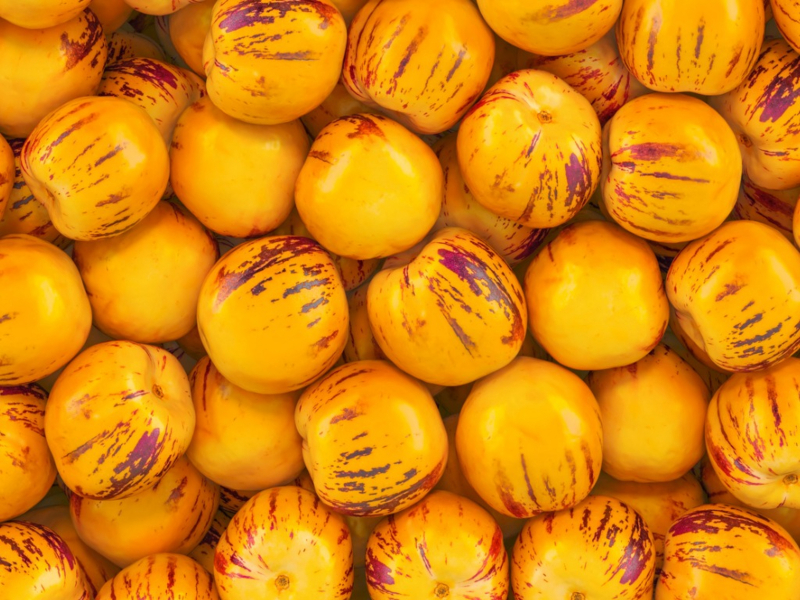
Gardening Know How -
Banana passionfruit, botanically classified as Passiflora mollissima, is a species belonging to the Passifloraceae family. It originates from the Andean regions, including Peru, Colombia, Bolivia, and Venezuela. The seeds of this fruit were brought from Colombia and Ecuador to the US in 1920. The oblong, yellow fruits were named for their similarity in color and shape to a small banana and grow on evergreen climbing vines that can reach 6 to 7 meters in length. Banana passionfruit is a vigorous plant, maturing and bearing fruit in just one year. In its native habitat in South America, the vines can live for 15 to 20 years, and one single vine can produce 150 to 300 fruits per year.
Small to medium-sized, with an average size of 5 to 12 centimeters in length and 3 to 4 centimeters in breadth, and with a straight, oblong to ovoid form that tapers slightly at both ends, is the banana passionfruit kind. The skin ripens from green to pale yellow and becomes semi-thin, leathery, silky, and dusted with downy fuzz. Underneath the skin, the flesh is made up of tiny arils with flat, black, elliptic seeds encased in an orange-colored, meaty, watery, transparent pulp. The delicious, tropical aroma of the arils is evocative of oranges, and they are slippery and fragrant. The flavor of banana passionfruit is sweet, acidic to subacid, and tropical with hints of nectarine and peach. It is significant to remember that while the seeds are edible, they could taste harsh.
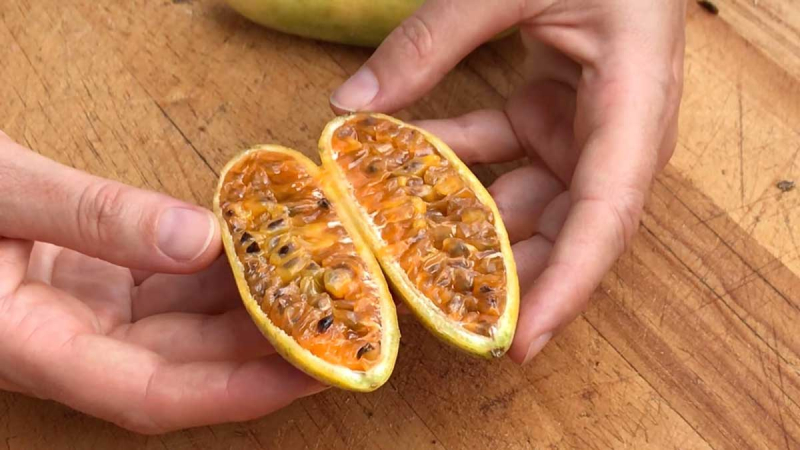
Garden Paradise Seeds 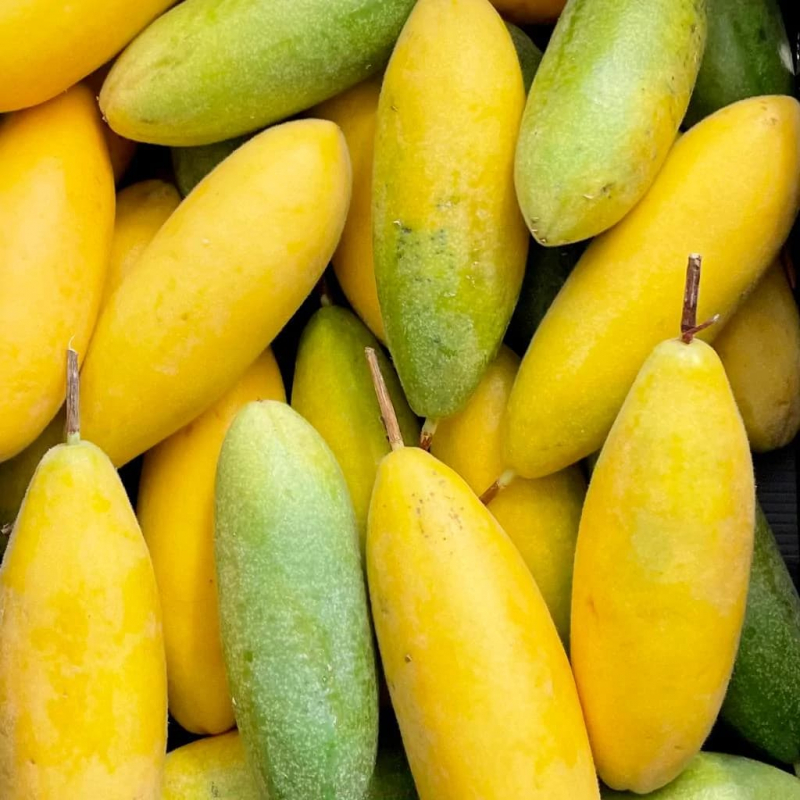
Exotic Fruits -
Granadillas, botanically classified as Passiflora ligularis, are fruits of a climbing vine belonging to the Passifloraceae family. The sweet and tangy, seedy fruits are native to Central and South America and have become widely naturalized in tropical and subtropical regions worldwide. Granadilla is known by many names and spellings, including Sugar fruit, Sweet Granadilla, Granadia, Granadilla, and Granada China. The yellow-skin fruits are not as well-known as the purple passionfruit, but they are increasing in popularity, especially throughout Central America, for their mild nature.
Granadillas are small to medium-sized fruits with an elongated, oblong to oval form and a hollow, lightweight sensation. They typically measure 6 to 8 centimeters in length and 3 to 5 centimeters in diameter. Smooth, firm, and thick, the rind is originally green when young but turns orange-yellow as it ages. It is significant to note that when mature, the rind will remain smooth and won't wrinkle, unlike purple passionfruit. Granadillas have a flavor that is fruity, vibrant, sweet, and tangy with notes of the tropics and flowers. The seeds also bring up nutty undertones. Peru is one of the countries that produce many Granadillas globally. This fruit is used commonly in making juices, drinks, and salads.
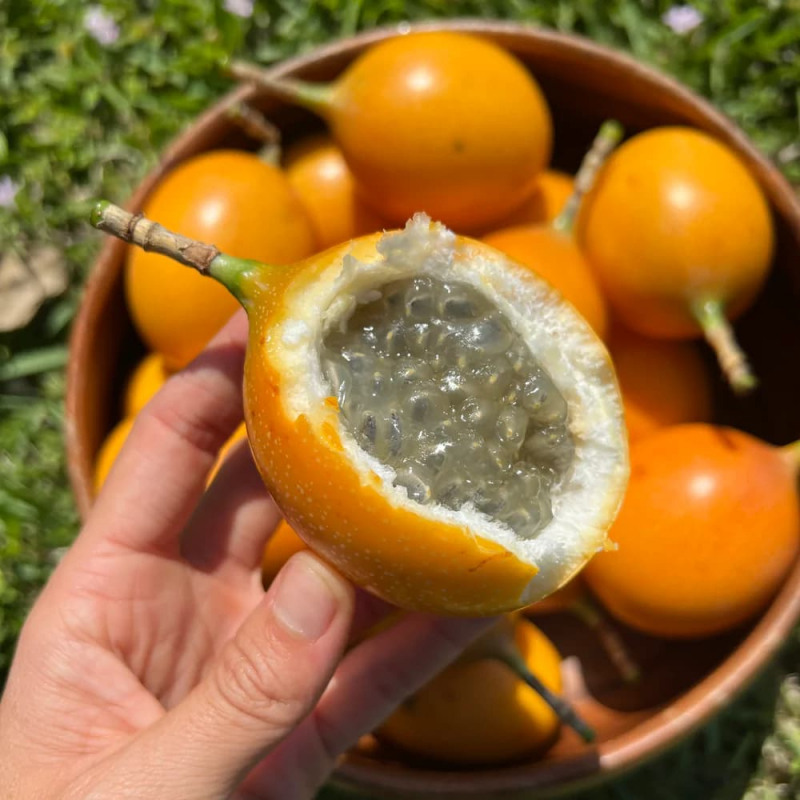
Candide 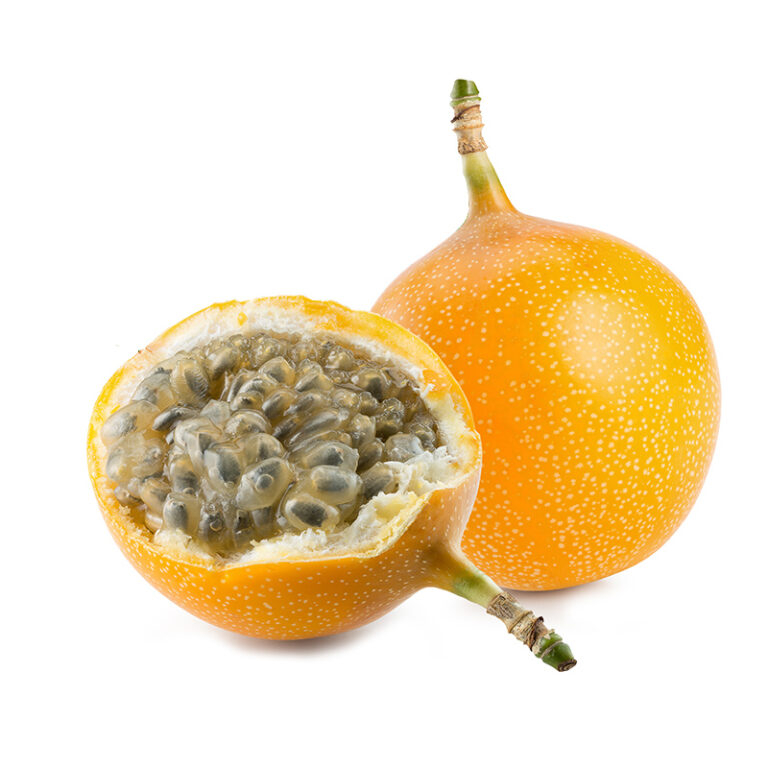
TasteAtlas -
Snake fruit is in the Arecaceae or palm family, and is botanically classified as Salacca zalacca. It is known as Salak in Malaysia and Indonesia, but its thin, scale-like skin, very similar in appearance to that of a cobra or python, earned it the popular moniker, Snake fruit. There are actually about 30 different types of Snake fruit grown throughout their native land, and while many can be brutally bitter when raw and are used solely in cooking, the commonly cultivated types have a unique, sweet, and sour flavor. This fruit is a favorite food of many bird varieties in the natural environment. Meanwhile, snake fruit will use for making juice, jam, ice cream, or wine. Peru produces over 50 tonnes of aguaje in a day.
Snake fruit has a globular body that tapers to a point at one end and is shaped and sized like a fig. Shiny, dark to light reddish-brown scales that may have tiny spikes on them surround the fruit. The skin is actually quite thin and may be readily pulled off by breaking the tip, despite being scaly and prickly and appearing to be tough. Snake fruit's unique tropical flavor is frequently compared to a combination of apple, pineapple, and banana. It tastes sweet or sour depending on the variety and has the honey-like sweetness of honey with an acidic finish that leaves a zesty tingle on the mouth. Snake fruits grow on short-trunked palm trees, sprouting off the base of the palm in little clusters. The plants have large spiked stems and leaves, which can grow up to six meters long.
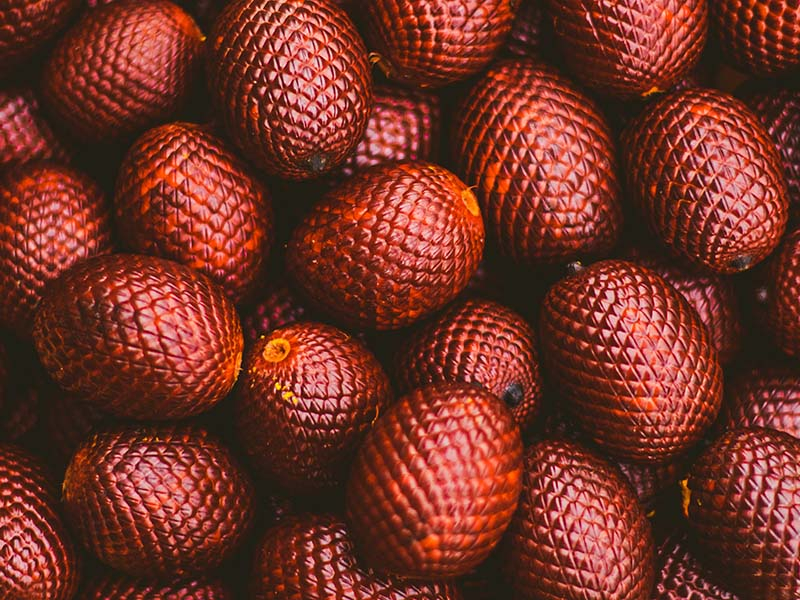
Lacademie 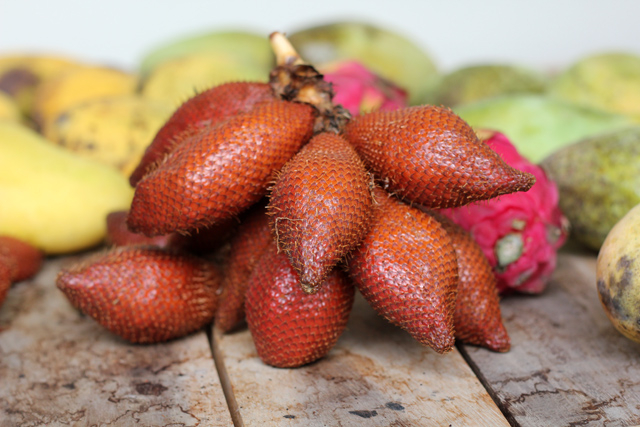
Migrationology.com -
Lucuma, botanically classified as Pouteria lucuma, is a rare, ancient fruit belonging to the Sapotaceae family. Lucuma is a national fruit of Peru. This distinctive fruit originates in the Andean valleys of Chile, Peru, Bolivia, and Ecuador. You can find lucuma images on ceramics at burial sites of local people in coastal regions in Peru. The greyish-brown, fissured bark of this evergreen tree, which can reach a height of 20 meters, secretes a milky white fluid. Short, brown hairs cover the petioles and the ends of branchlets. The mature fruit is globose-shaped, 6-12 cm long, glabrous, and russet to yellow. The pulp is bright yellow, and one to several glossy, dark brown, 1.8 to 3.5 cm long seeds may be present.
It is perfect as an ingredient in baked pastries and ice cream because of its flavor, which is best described as somewhat sweet and resembling maple. Lucuma was first known as the "gold of the Incas" and was revered as a fertility symbol. Lucuma is an excellent source of fiber to regulate the digestive tract and a good source of vitamin C, which is an antioxidant that strengthens the immune system while providing anti-inflammatory properties. The fruits also contain B vitamins, potassium, phosphorus, iron, and magnesium.
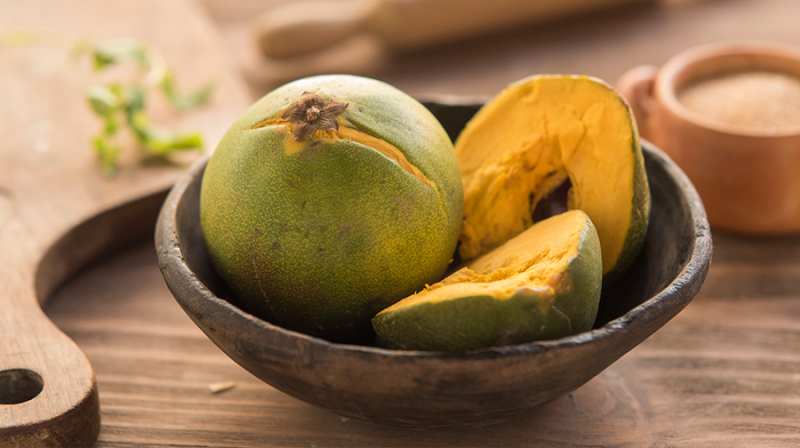
iStock 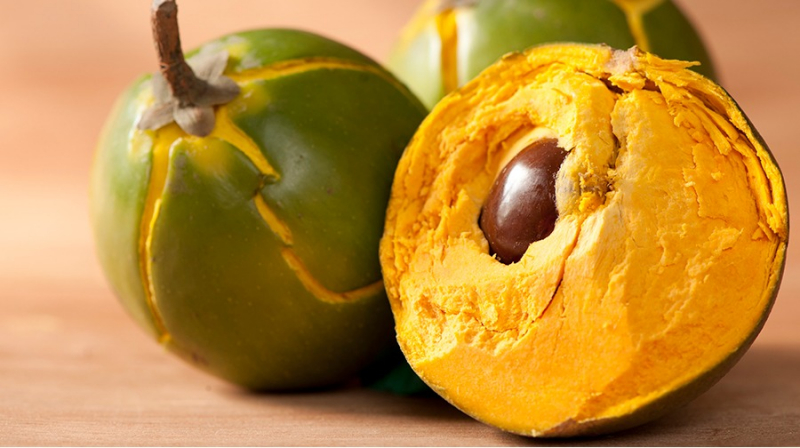
iStock












